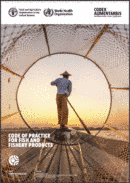Live Fish & Shellfish Transport
Live fish transport is used to transfer aquaculture products, high value fin-fish from wild capture fisheries, crustaceans and molluscs from production holding facility to retailer or restaurant. Live fish transport enables fish and fish products to be transported long distances in a controlled environment which helps to maintain product quality, freshness and prevent death and spoilage that would occur in non-live products. Live fish and shellfish are transported on sea by specially designed vessels, on land by vehicle by air as airfreight.
Mortality is the major concern and cause of food loss and waste (FLW). A product that is dead or moribund on arrival is virtually worthless. For fresh seafood any loss of quality is another concern.
Key causes of FLW and mortality and include:
- Harvesting process is slow and stressful for fish
- Fish suffer skin or scale damage during capture
- Fish not starved/purged properly leading to deterioration of water quality during transport
- Higher than optimal density of product in containers/packaging
- Malfunction of live fish holding and transport technology causing mortality
- Puncture of packaging materials leading to the oxygenation
- Barotrauma when fish are hauled up from causing swim bladder expansion
Key Publications
Catching, Handling and Transport: The implications for Fish Welfare Discusses different techniques of capture, handling and transport of fish within aquaculture. | |
Synopsis of the Hong Kong Seafood Market Provides key information on popular seafood items and product forms including live fish and shellfish, sales and restaurant venues, as well as Hong Kong consumer habits and trends. | |
Code of Practice for Fish and Fishery Products Codes of practice and guidelines designed to help meet standards and comply with legislation (e.g the Codex Alimentarius Code of Practice for Fish and Fishery Products). |
More Resources
More Resources
31 October 2023














